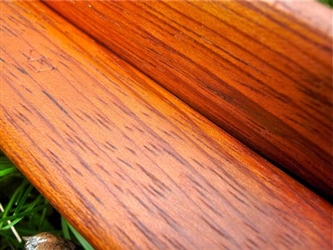 |
Jatoba
Jatoba is a dense exotic wood from Central America, Mexico, South America and the West Indies that because of its stiffness delivers a strong sharp tone.
Known as Brazilian Cherry and Brazilian Teak, Jatoba holds no relation to those woods - yet it remains among the very toughest of all timbers worldwide.
Bone Rattling Facts
Jatoba is well suited for hand-held musical instruments because it is exceptionally stiff, strong, hard and durable. Jatoba enjoys a place among the very toughest of all timbers worldwide and is naturally resistant to insects and decay.
Cool Facts
-
Although Jatoba is an imported timber it is surprisingly inexpensive.
-
The bark contains a resin used in special varnishes and cements.
-
Common uses for Jatoba include railroad ties, tool handles and lifeboats.
Figures below are approximate (but pretty darn close)
Tonality
Can't Decide Which Bones to Choose?
Check out this handy guide: Bone FAQs
Scroll down for technical Jatoba facts...
|
|
Jatoba Facts
Scientific Name
Hymenaea courbaril
Other Names
Brazilian Cherry
Brazilian Teak
Alga
Algarrobo
Azucar huayo
Copal
Copinol
Courbaril
Gaupinol
Jatahy
Jutai
Kawanari
Locust
Pie de venado
Rode locus
Rode rode locus
Sirari
West indian locust
Lookalike Woods
Bubinga
Cherry
Cumaru
Ipe
Pauduk
Teak
Grain
The grain is wavy and interlocked.
Texture
The texture is medium to coarse with large pores in the end grain.
Luster
Luster is described as dull to fairly lustrous.
Heartwood Color
Reddish brown
(Cinnamon Fudge Stripe)
The color varies from salmon-red to orange-brown and becomes darker with age. Some segments display dark grayish brown streaks and curly figuring.
Sapwood Color
Wide sapwood areas are white, gray, or pinkish and clearly demarcated from the heartwood. Might look similar to Maple.
Aroma
The U.S. Forest Service reports that some species are without odor or taste. Other species emit a distinctive aroma and sometimes a perceptive taste.
Toxicity
Severe reactions are uncommon, although Jatoba has been reported to cause skin irritation.
Woodworking
Jatoba is difficult to work with because of its high density and hardness. However, it is easy to sand, glue, stain and finish. Polishing creates a wonderful luster.
Environmental Profile
Some material from this species is reported to be available from environmentally responsible or sustainably managed sources. The International Tropical Timber Organization (ITTO) reports that Jatoba is an important source of timber for export.
Distribution
Jatoba is found in Central America, southern Mexico, northern South America and the West Indies. It also reportedly grows in Oceania and S.E. Asia.
Tree Data
The tree grows from around 100 (30 m) to 130 feet (40 m) feet. Trunk diameter averages around 2 to 4 feet (60 to 122 cm).
|
|
|